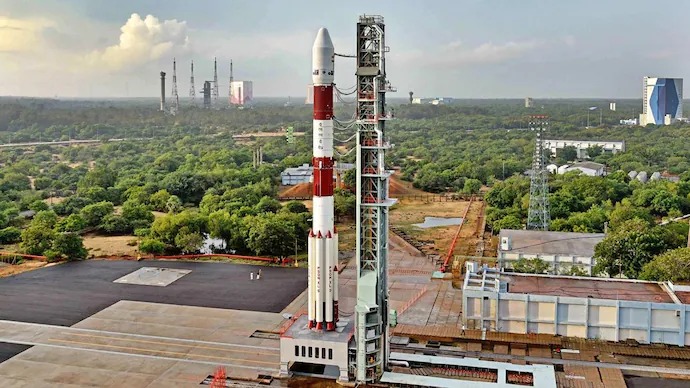On Friday, ISRO Scientists started the countdown to launch the Earth-observation satellite Oceansat and eight other customer satellites on a PSLV-C54 rocket from the Sriharikota spaceport on Saturday.
The 25:30-hour countdown for the 56th flight of the extended version (PSLV-XL) of the Polar Satellite Launch Vehicle (PSLV) will begin at 10:26 am today.
The rocket’s primary payload is Oceansat, which will separate in Orbit 1. At the same time, the other eight nano-satellites will enter different orbits according to customer requirements (sun-synchronous polar orbit).
Including the primary load, the nine satellites will be carried on the 44.4-meter-high PSLV-C54 satellite, which has a lift-off mass of 321 tons. This is also the 24th flight of the PSLV-XL version.
The mission will be one of the longest ever undertaken by ISRO scientists and will use the twin orbit change thrusters (OCT) used in the PSLV-C54 launch vehicle to cause the rocket to change orbit. The Earth observation satellites’ separation is expected to occur in Orbit 1, while the passenger payload will be separated in Orbit 2.
The earth observation satellite is expected to set up after reaching an altitude of about 742 km about 20 minutes after lift-off.
After separating the primary satellite, the aircraft will descend to an altitude of 516 km to install the first passenger satellite. ISRO said the final payload separation is expected at an altitude of 528 km.
Earth Observation Satellite-6 is the third-generation satellite of the Oceansat series. It aims to provide continuity services for the Oceansat-2 spacecraft with advanced payload specifications and application areas. The mission’s objective is to ensure the continuity of ocean colour and wind vector data to maintain operational applications.
Customer payloads include the ISRO Nano Satellite-2 (INS-2B) for Bhutan, which will have two payloads, NanoMx and APRS-Digipeater. NanoMx is a multispectral optical imaging payload developed by the Space Applications Centre, while the APRS-Digipeater payload was jointly developed by Bhutan’s Department of Information Technology and Telecommunications with the U R Rao Satellite Centre in Bangalore.
The “Anand” satellite, developed by Pixxel, is a technology demonstrator to demonstrate the functionality and commercial application of a miniature Earth observation camera for observation using microsatellites in low Earth orbit.
“Thybolt” (two satellites) is from another space startup, Dhruva Space, while Astrocast is an IoT technology demonstration satellite serving as a payload for Spaceflight in the US.


 Signals, Powered By EquityPandit
Signals, Powered By EquityPandit

